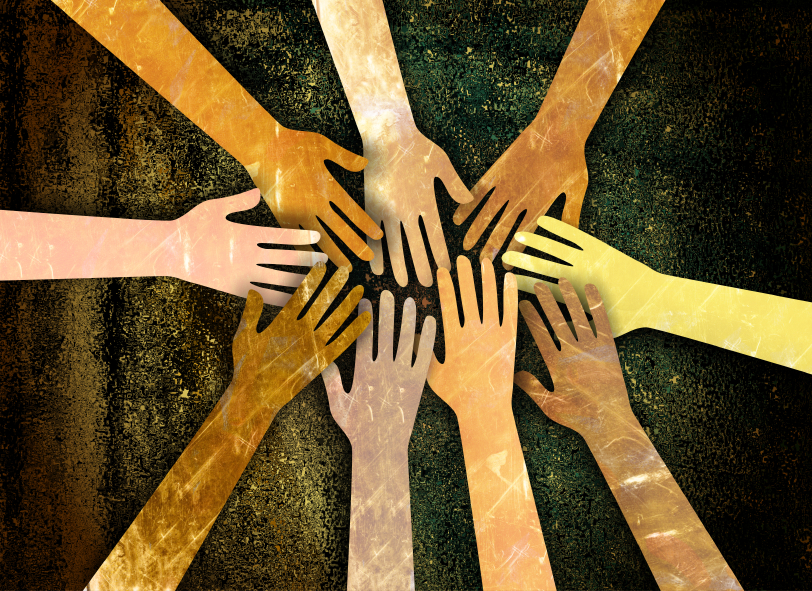Research consistently shows that global teams are much more creative and, therefore, have a competitive advantage in how they approach markets and understand their customers. This gave birth to the useful “global” concept, which reinforces the value of diversity in our work. However, it also shows that multicultural teams are much slower than monocultural teams to make decisions and may suffer greater conflict and subsequent lower productivity if collaboration is not managed in a way that reinforces their strengths.
In-person interaction, including face-to-face meetings and socializing in a traditional, pre-pandemic way, has been shown to reduce tensions and cultural misunderstandings and help people put themselves in “others’ shoes.” While we have excelled in many ways in remote environments, “reading the room,” a critical skill when working with global teams, can be more difficult on a virtual meeting platform. In fact, the impact of COVID-19 on teams and team dynamics has been profound. Teams have suffered in a variety of ways, including a lack of interactions, increased silo mentality, and reduced organizational connections.
So, while travel restrictions continue, how can organizations overcome the limitations forced by COVID-19 to foster dynamic conversations and further develop a global mindset with their employees—one that respects and values diversity and generates deeper understanding among team members to deliver that competitive advantage?
Facilitating conversations around a cultural model can be the first step in achieving this goal. Using a cultural model as a base for discovery and exchange can be a useful way to foster mutual understanding while avoiding essentialism and stereotyping—a frequent trap when you cannot make sense of someone else’s behavior, especially if that person is remote or may speak differently.
Steps to Foster an Open-Minded Cultural Conversation
There are several cultural models that global teams can utilize, with most offering a way to assess various cultures using the following categories:
- Communication style
- Decision-making approach
- Conflict resolution
- Trust
- Persuasion
A cultural model allows global teams to look at the factors that affect these categories and helps determine where a country’s culture falls on the continuum.
For example, in the United States, people generally make an argument starting with a fact, a statement, or an opinion, followed by supporting points. Discussions are approached in a practical, concrete manner, and messages or reports are delivered with an executive summary or bulleted points of interest. In contrast, the French culture embraces a more theoretical or philosophical perspective when making an argument. They often develop a theory to explain a complex concept before presenting a fact, a statement, or an opinion.
These straightforward differences can cause frustration and tension, derailing progress. Therefore, finding a model that sufficiently and practically addresses specific team challenges is vital to leverage the strengths of a multicultural team.
One preferred model is Erin Meyer’s Culture Map. It provides an assessment for team members and allows for a robust conversation on the eight dimensions of culture, especially how those factors come into play in the business world. Teams can start by picking two or three dimensions that are the most relevant to their situation based on primary difficulties they encounter with their teammates, ranging from misunderstanding verbal cues to a lack of decisiveness among team members.
Once teams have identified the most pressing issues, corresponding dimensions in the model guide team members to strategically address those areas and show them where they fall individually compared with their teammates. The guidelines then support open and constructive dialogue.
These conversations must be handled with care, curiosity, and an open mind to ensure positive outcomes. Cultural traits are always relative to another culture, but depending on the angle from which a team member looks at someone else’s culture, they will appear quite different.
Famous anthropologist Clifford Geertz uses the following definition: “[C]ulture is the fabric of meaning in terms of which human beings interpret their experience and guide their action. It is an ordered system of meaning and of symbols in terms of which social interaction takes place.”
In other words, human beings fabricate meaning based on their own personal experiences in the moment. Global teams most often operate in the field of interpretation, not truth. Leaders should also consider their own emotional intelligence competencies, such as self-awareness, self-management, and empathy, to filter and refine their team’s interpretations and broaden their ways of thinking.
Outcomes and Future Steps
What are the outcomes of such a process done well? Not just a series of data points and knowledge about theoretical cultural traits but also, more importantly, a reinforced understanding and trust between members and a stronger sense of psychological safety when teammates interact.
Ideally, culturally aware teams will address challenges more openly before judgment and rejection have time to interfere. Meta communication takes place about what is going on in the moment, and feelings are respectfully expressed in search of cooperation.
New team members should be introduced to these multicultural dimensions and will need to remember that the “multicultural conversation” takes place each time it is necessary.
Global teams should also remember that cross-cultural collaboration is not easy and needs to be worked at every day. It can be a source of fun and motivation and a way to learn from one another.
American anthropologist Edward T. Hall once said, “Most cross-cultural exploration begins with the annoyance of being lost.” The good news is that once you find your way, the annoyance vanishes and is replaced by an increased appreciation for cultural connection.
Laurie Cure, CEO of Innovative Connections, a consulting company based in Colorado, and Virginie Bodescot, Executive Coach of Sense Making Consulting in Paris, France, partnered on this discussion to support leaders and teams to leverage their diversity and multicultural environments to improve team dynamics and performance.

